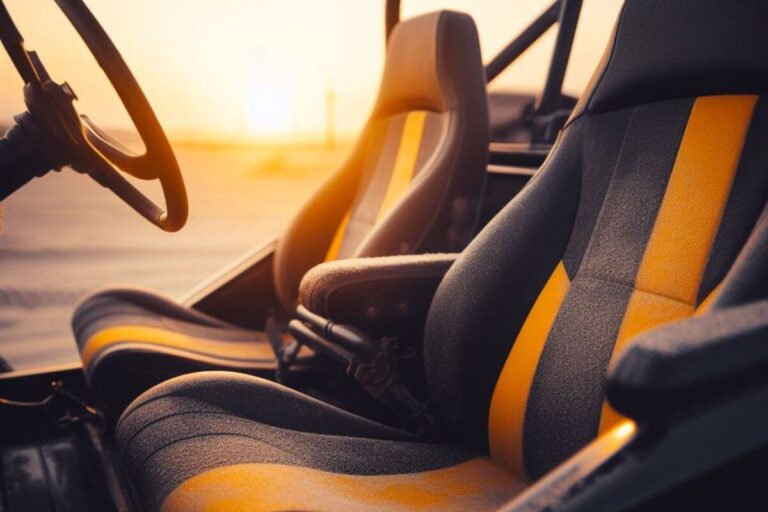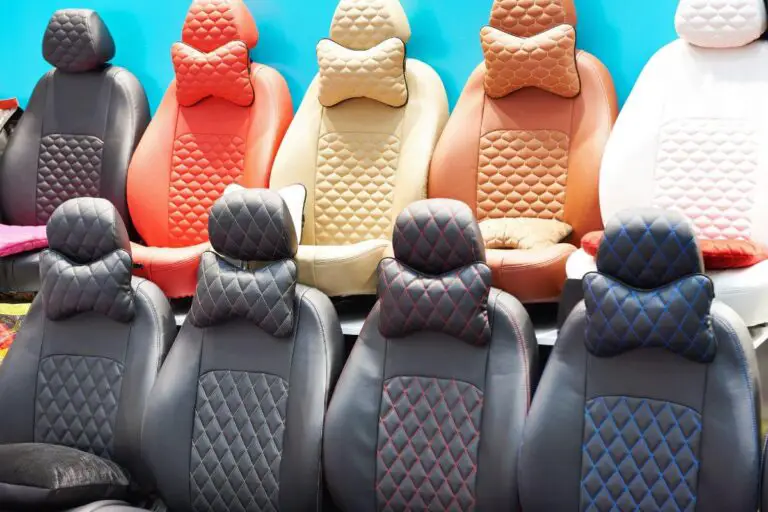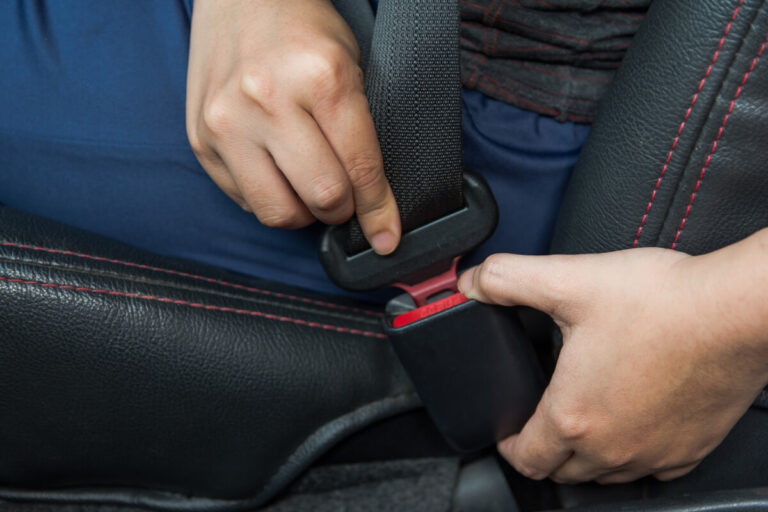Dune Buggy Back Seat: A Guide to Choosing the Right One
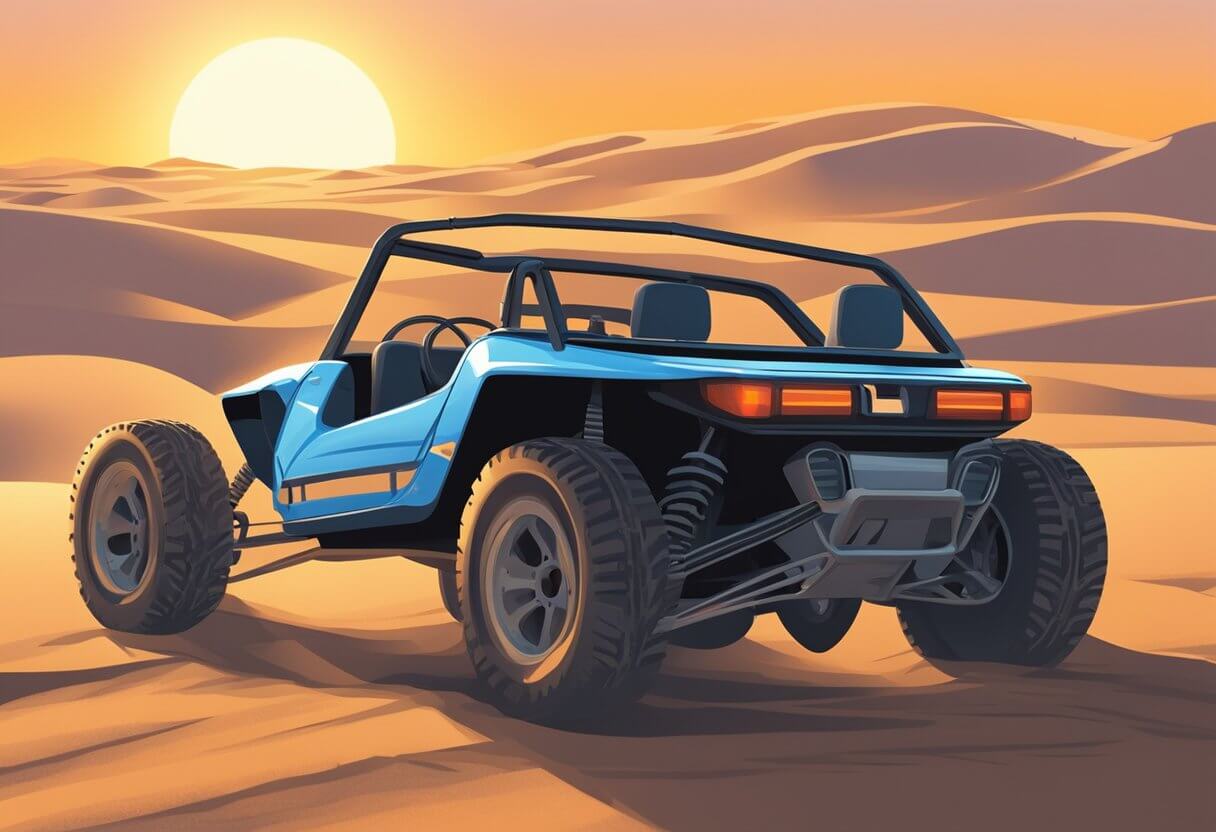
Dune buggies are popular off-road vehicles that are designed for maximum fun and adventure. They are lightweight, agile, and equipped with powerful engines that can handle any terrain. One of the essential components of a dune buggy is the back seat. The back seat not only provides additional seating capacity but also enhances the comfort and safety of the passengers.
The inaugural dune buggy made its debut on the sun-drenched shores of California in 1964, heralding a new era of off-road adventure and thrills. They were initially built using Volkswagen Beetle chassis and were designed to be driven on sand dunes. Over the years, dune buggies have evolved, and so have their back seats. Today, there are several types of dune buggy back seats available in the market, each with its unique features and advantages.
When it comes to choosing a dune buggy back seat, there are several factors to consider, such as materials, construction, installation, maintenance, and safety guidelines. It is essential to choose a back seat that is durable, comfortable, and safe for the passengers. Moreover, customization options and popular brands and models can also play a significant role in the decision-making process.
Key Takeaways
- Dune buggies have a rich history dating back to the 1960s.
- There are several types of dune buggy back seats available in the market, each with its unique features and advantages.
- When choosing a dune buggy back seat, it is essential to consider factors such as materials, construction, installation, maintenance, and safety guidelines.
History of Dune Buggies
Dune buggies have been around for over half a century, and their history is as fascinating as their design. In this section, we’ll take a look at the origins of dune buggies and how they’ve evolved over the years.
Origin of the Back Seat Design
The first dune buggy was created in the 1964s by Bruce Meyers, an artist, mechanic, boat builder, and surfer. He wanted a vehicle that could handle the sand dunes of Southern California, so he built a lightweight, open-top car with a rear-mounted engine. The car was called the Meyers Manx, and it quickly became popular among off-road enthusiasts.
One of the key features of the Meyers Manx was its back seat. The car was designed to be a two-seater, but Meyers realized that many of his customers wanted to bring friends or family along for the ride. So he added a small back seat behind the driver and passenger seats. This back seat was a simple bench with no seat belts or other safety features, but it allowed the car to carry up to four people.
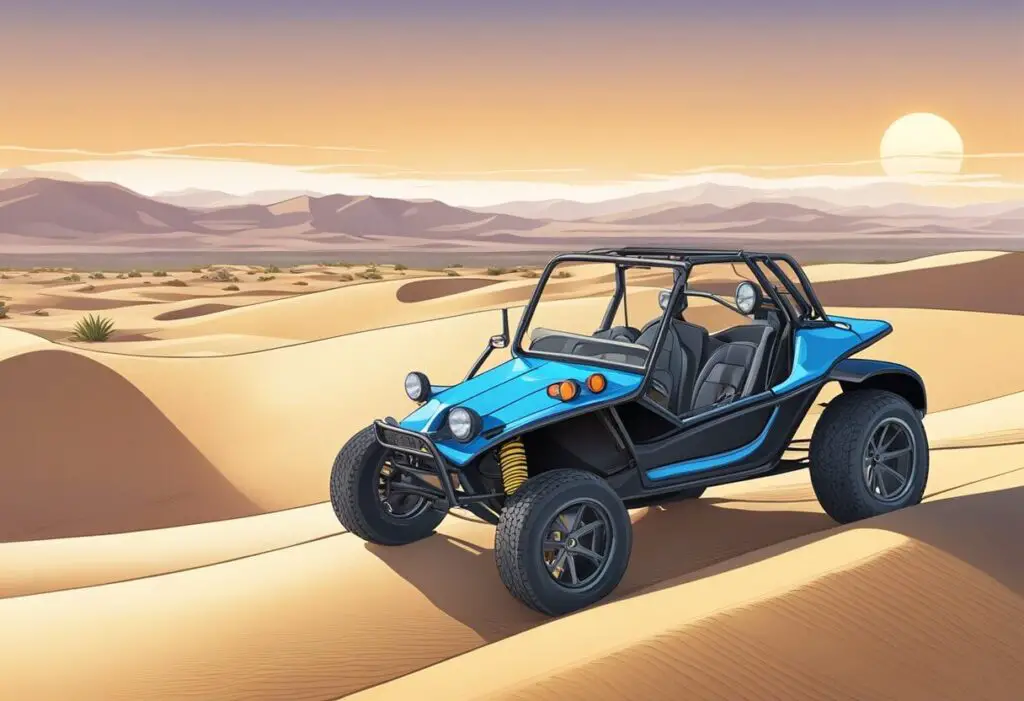
Evolution of Passenger Comfort
Over the years, dune buggies have evolved to become more comfortable and safer for passengers. The back seat has been a key area of focus for these improvements.
In the early days of dune buggies, the back seat was often an afterthought. It was a simple bench that provided little comfort or protection for passengers. But as dune buggies became more popular and more people started using them for family outings and other activities, designers began to focus on making the back seat more comfortable.
Today, many dune buggies feature back seats that are just as comfortable as the front seats. They may have padded seats, seat belts, and other safety features to protect passengers in the event of an accident. Some dune buggies even have air conditioning and other amenities to make the back seat a more enjoyable place to ride.
Types of Dune Buggy Back Seats
When it comes to dune buggy back seats, there are several types to choose from. Each has its own unique features and benefits. In this section, we will take a closer look at the three main types of dune buggy back seats: bench seats, bucket seats, and convertible seats.
Bench Seats
Bench seats are the most common type of dune buggy back seat. They are typically made of vinyl or fabric and can seat two to three people comfortably. Bench seats can be mounted directly to the frame of the dune buggy or can be mounted on a seat slider for added adjustability.
Bucket Seats
Bucket seats are another popular option for dune buggy back seats. They are designed to provide more support and comfort than bench seats. Bucket seats are typically made of fiberglass or vinyl and come in a variety of colors and styles. They are also available with built-in seat belts for added safety.
Convertible Seats
Convertible seats are a unique type of dune buggy back seat that can be converted from a bench seat to a bucket seat. They are ideal for those who want the flexibility to switch between the two styles depending on their needs. Convertible seats are typically made of high-quality vinyl or fabric and are available in a variety of colors and patterns.
Materials and Construction
Common Materials Used
Dune buggy back seats are typically made from a variety of materials, including fiberglass, vinyl, and fabric. Fiberglass is a popular choice due to its durability and resistance to weathering. Vinyl and fabric seats are often chosen for their comfort and style.
When selecting a material for a dune buggy back seat, it is important to consider the intended use of the vehicle. If the buggy will be used off-road or in harsh weather conditions, a material that is resistant to weathering and abrasion may be more appropriate.
Safety Features
Safety is a top priority when it comes to dune buggy back seats. Many seats are designed with safety features such as seat belts and roll bars to protect passengers in the event of an accident.
When selecting a dune buggy back seat, it is important to ensure that it meets safety standards and regulations. This may include ensuring that the seat is securely mounted and that the seat belts are properly installed and functional.
Durability Considerations
Durability is another important factor to consider when selecting a dune buggy back seat. The seat should be able to withstand the rigors of off-road driving and exposure to the elements.
Fiberglass seats are often chosen for their durability and resistance to weathering. Vinyl and fabric seats may be more prone to wear and tear over time, but can still provide a comfortable and stylish seating option.
Overall, it is important to select a dune buggy back seat that is both safe and durable, while also meeting the driver’s comfort and style preferences.
Installation Guide
Tools Required
Before starting the installation process, it is important to have all the necessary tools at hand. The following tools are required to install a back seat in a dune buggy:
- Socket wrench set
- Screwdrivers
- Drill and drill bits
- Tape measure
- Pliers
- Safety glasses
- Gloves
Step-by-Step Installation Process
Installing a back seat in a dune buggy can be a challenging task, but by following the step-by-step process, it can be done easily. Here is a guide to help you install a back seat in your dune buggy:
- Start by measuring the dimensions of the back seat area in the dune buggy to ensure the seat fits properly. Take note of the measurements and compare them to the dimensions of the back seat you plan to install.
- Next, remove any existing seats or brackets in the back seat area of the dune buggy. Use a socket wrench set and screwdrivers to remove any bolts or screws.
- Once the area is clear, place the back seat in the desired position and mark the location of the mounting brackets. Use a drill and drill bits to create holes for the mounting brackets.
- Install the mounting brackets onto the back seat using bolts and nuts. Tighten the bolts and nuts securely using a socket wrench set.
- Place the back seat into the back seat area of the dune buggy and align the mounting brackets with the holes previously drilled. Use bolts and nuts to secure the back seat to the dune buggy.
- Finally, test the back seat to ensure it is securely installed and does not move around. Adjust the seat as necessary and tighten any bolts or nuts that may have loosened during installation.
By following this step-by-step installation process, you can easily install a back seat in your dune buggy. Always ensure that the seat is securely installed to ensure the safety of the passengers.
Maintenance and Care
Cleaning Procedures
To maintain the quality of your dune buggy back seat, regular cleaning is essential. Dirt, dust, and sand particles can accumulate on the seat and cause damage over time. Therefore, it is recommended to clean the seat after every off-road trip.
To clean the seat, use a soft-bristled brush or a vacuum cleaner to remove any loose dirt and debris. Then, use a mild soap solution and a damp cloth to wipe down the seat. Avoid using harsh chemicals or abrasive cleaners, as they can damage the seat’s surface. After cleaning, let the seat dry completely before using it again.
Regular Inspection
Regular inspection of the dune buggy back seat is important to identify any signs of wear and tear. Check for any cracks, tears, or loose stitching on the seat’s surface. Also, inspect the seat frame and mounting brackets for any signs of damage or corrosion.
If any issues are found during the inspection, it is recommended to address them immediately to prevent further damage. Contact a professional mechanic or upholstery specialist for repairs or replacement.
Replacement Tips
If the dune buggy back seat is beyond repair, replacement is necessary. When choosing a replacement seat, consider factors such as the seat’s material, size, and compatibility with the dune buggy’s frame.
There are various types of dune buggy back seats available, including fiberglass, vinyl, and fabric seats. Each has its own advantages and disadvantages, so choose the one that best fits your needs and preferences.
In addition, make sure to follow the manufacturer’s instructions for installation to ensure proper fit and safety. It is also recommended to use high-quality seat belts and harnesses for added safety and protection.
By following these maintenance and care tips, you can ensure the longevity and safety of your dune buggy back seat.
Safety Guidelines
When it comes to dune buggy back seats, safety should always be a top priority. Here are some guidelines to follow to ensure the safety of everyone riding in the back seat.
Seat Belts and Harnesses
Seat belts and harnesses are essential for keeping passengers safe in a dune buggy. It is recommended to use at least a 4-point harness with antisubmarine belts for maximum safety. A 5- or 6-point harness setup anchored securely is even better. Passengers should always wear the seat belt or harness properly and securely.
Legal Requirements
It is important to check the legal requirements for dune buggy back seats in your area. Some states or countries may have specific laws regarding the use of seat belts and harnesses, as well as the age and size of passengers allowed in the back seat. Make sure to follow all applicable laws and regulations to avoid any legal issues.
Child Safety
When it comes to children riding in a dune buggy back seat, extra precautions should be taken. Children should always be secured in a car seat or booster seat appropriate for their age, height, and weight. It is also recommended to have a roll bar or other safety features installed to protect passengers in case of an accident.
Customization Options
When it comes to customizing the back seat of a dune buggy, there are several options available to suit different preferences and needs. Here are some of the customization options that can be considered:
Custom Upholstery
One way to personalize the back seat of a dune buggy is by adding custom upholstery. This can include choosing a specific color, pattern, or material that matches the overall design of the vehicle. Some popular materials for dune buggy back seats include vinyl, fabric, and leather.
Custom upholstery not only adds a touch of style to the back seat, but it can also make it more comfortable for passengers. For example, adding extra padding or lumbar support can help reduce fatigue and discomfort during long rides.
Adjustable Seating
Adjustable seating is another customization option to consider for the back seat of a dune buggy. This can include adding features such as reclining seats, adjustable headrests, or lumbar support.
Having adjustable seating can provide added comfort and support for passengers, especially during bumpy rides or off-road adventures. It can also help accommodate passengers of different sizes and preferences.
Additional Accessories
In addition to custom upholstery and adjustable seating, there are several other accessories that can be added to the back seat of a dune buggy. This can include features such as cup holders, storage compartments, or even a built-in sound system.
Adding these accessories can enhance the overall experience of riding in the dune buggy, making it more convenient and enjoyable for passengers. However, it is important to ensure that any added accessories are securely installed and do not compromise the safety of passengers.
Customizing the back seat of a dune buggy can be fun and exciting. Consider options like custom upholstery, adjustable seating, and accessories for a more comfortable, personalized ride for passengers.
Popular Brands and Models
When it comes to dune buggy back seats, there are several popular brands and models to choose from. Here are some of the most highly rated options on the market:
PRP Enduro Elite
The PRP Enduro Elite is a high-end suspension seat that provides excellent support and comfort. It features a durable steel frame and a suspension system that can handle even the roughest terrain. The seat is also available in a variety of colors and fabrics, so you can customize it to match your buggy’s style.
Corbeau Baja XRS
The Corbeau Baja XRS is another popular choice for dune buggy back seats. It offers excellent support and comfort, thanks to its suspension system and contoured design. The seat is also made from high-quality materials that can withstand the elements, making it a great choice for off-road adventures.
EMPI High Back
The EMPI High Back is a classic dune buggy back seat that has been around for decades. It features a simple yet effective design that provides good support and comfort. The seat is also easy to install and comes in a variety of colors and fabrics to match your buggy’s style.
Beard Torque
The Beard Torque is a suspension seat that offers excellent support and comfort. It features a durable steel frame and a suspension system that can handle even the toughest terrain. The seat is also available in a variety of colors and fabrics, so you can customize it to match your buggy’s style.
Buying Guide
When it comes to buying a dune buggy back seat, there are a few things to consider. This section will provide a brief overview of what to look for when purchasing a dune buggy back seat.
New vs. Used
One of the first decisions to make is whether to purchase a new or used dune buggy back seat. A new seat will come with a warranty and may have more features, but it will also be more expensive. On the other hand, a used seat may be more affordable, but it may not be in as good condition or have as many features.
Price Range
The price range for dune buggy back seats can vary greatly depending on the brand, features, and condition. It is important to set a budget before shopping to avoid overspending. It is also important to keep in mind that a higher price does not always mean better quality.
Where to Purchase
There are many places to purchase dune buggy back seats, including online retailers, specialty shops, and private sellers. It is important to research the seller and read reviews before making a purchase. Additionally, it may be helpful to ask for recommendations from other dune buggy enthusiasts.
When choosing a dune buggy back seat, it is important to consider the size, material, and features. The seat should fit comfortably in the buggy and be made of durable materials that can withstand off-road conditions. Features such as adjustable headrests, lumbar support, and seatbelts can also enhance comfort and safety. By taking the time to research and compare options, buyers can find the best dune buggy back seat for their needs and budget.
User Reviews and Feedback
When it comes to choosing the right dune buggy back seat, it’s always helpful to hear from other users who have already made a purchase. Here are some user reviews and feedback to help you make an informed decision:
- One user mentioned that the Empi 62-2755-0 Low Back Poly Seat is a great option for those who want a comfortable and affordable back seat. They noted that the seat is easy to install and fits well in most dune buggies.
- Another user recommended the PRP Seats E47-210 Carbon Fiber High Back Suspension Seat for those who want a more premium option. They mentioned that the seat provides excellent support and comfort, and that the carbon fiber construction is both lightweight and durable.
- A third user mentioned that the Beard Torque V2 Seat is a great option for those who want a seat that can handle rough off-road conditions. They noted that the seat is well-built and provides excellent support, even on bumpy terrain.
Overall, it’s clear that there are plenty of great options when it comes to dune buggy back seats. Whether you’re looking for something affordable and comfortable or a more premium option that can handle rough terrain, there’s a seat out there that will meet your needs. Just be sure to do your research and read user reviews before making a purchase to ensure that you’re getting the best seat for your money.
Future Trends in Back Seat Design
As the dune buggy industry continues to evolve and improve, so will the design of back seats. Here are some potential future trends in back seat design:
1. Comfort and Ergonomics
Comfort and ergonomics have always been important factors in back seat design. In the future, back seats are likely to become even more comfortable with the use of advanced materials and padding. Ergonomic design will also be a consideration, with seats being designed to provide optimal support and posture for passengers.
2. Safety Features
Safety will always be a top priority in back seat design. In the future, back seats may come equipped with advanced safety features such as seat belts, airbags, and child safety locks. These features will help to ensure that passengers are protected in the event of an accident.
3. Customization Options
As the dune buggy industry continues to grow, customization options for back seats are likely to become more varied and advanced. Customers will be able to choose from a range of colors, materials, and designs to create a back seat that is unique to their tastes and needs.
4. Technology Integration
Technology is rapidly advancing in all areas of the automotive industry, and back seats are no exception. In the future, back seats may come equipped with advanced technology such as built-in entertainment systems, climate control, and even massage features.
Overall, the future of back seat design in dune buggies looks bright. With a focus on comfort, safety, customization, and technology, back seats are sure to continue to evolve and improve in the years to come.

